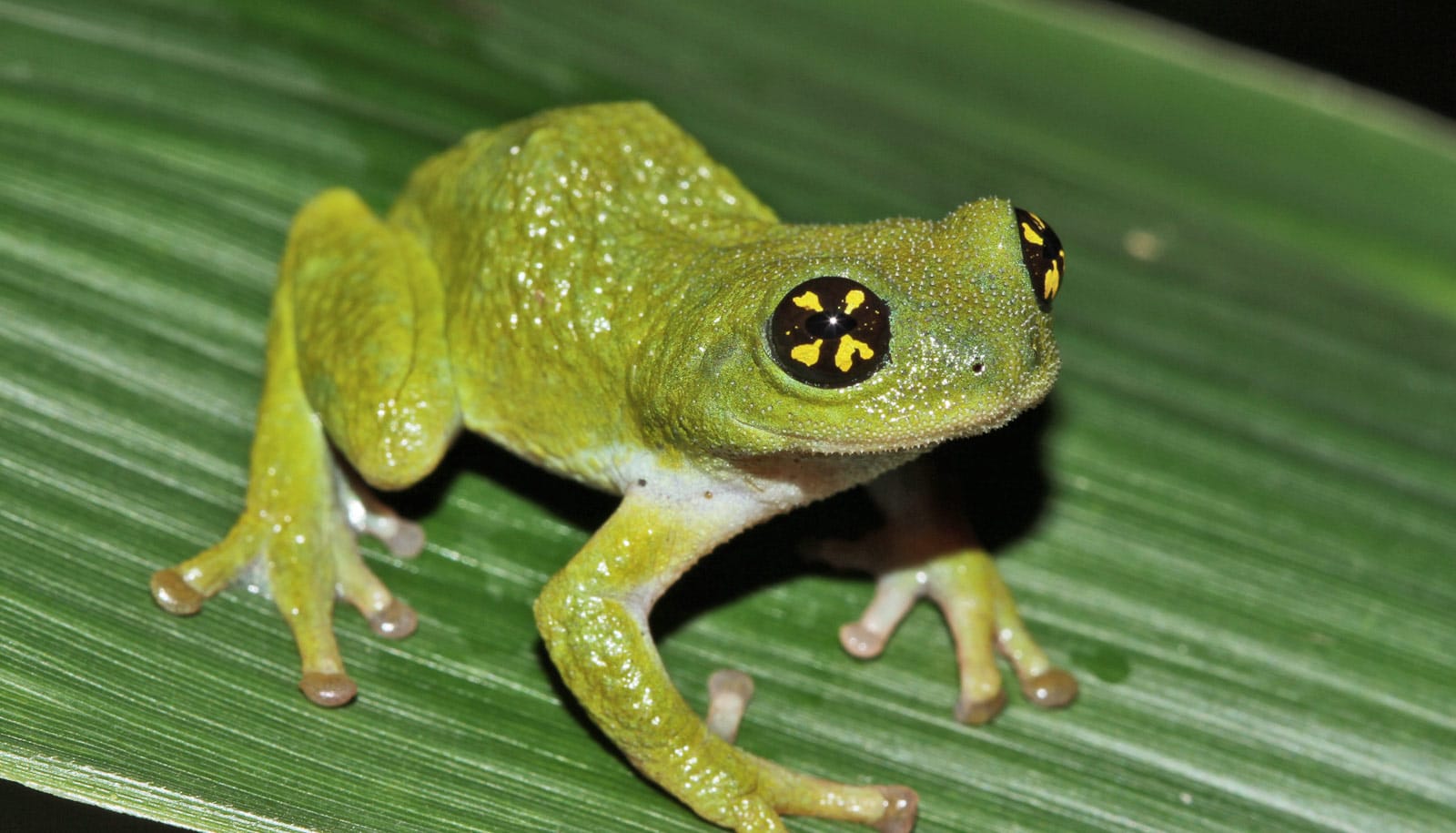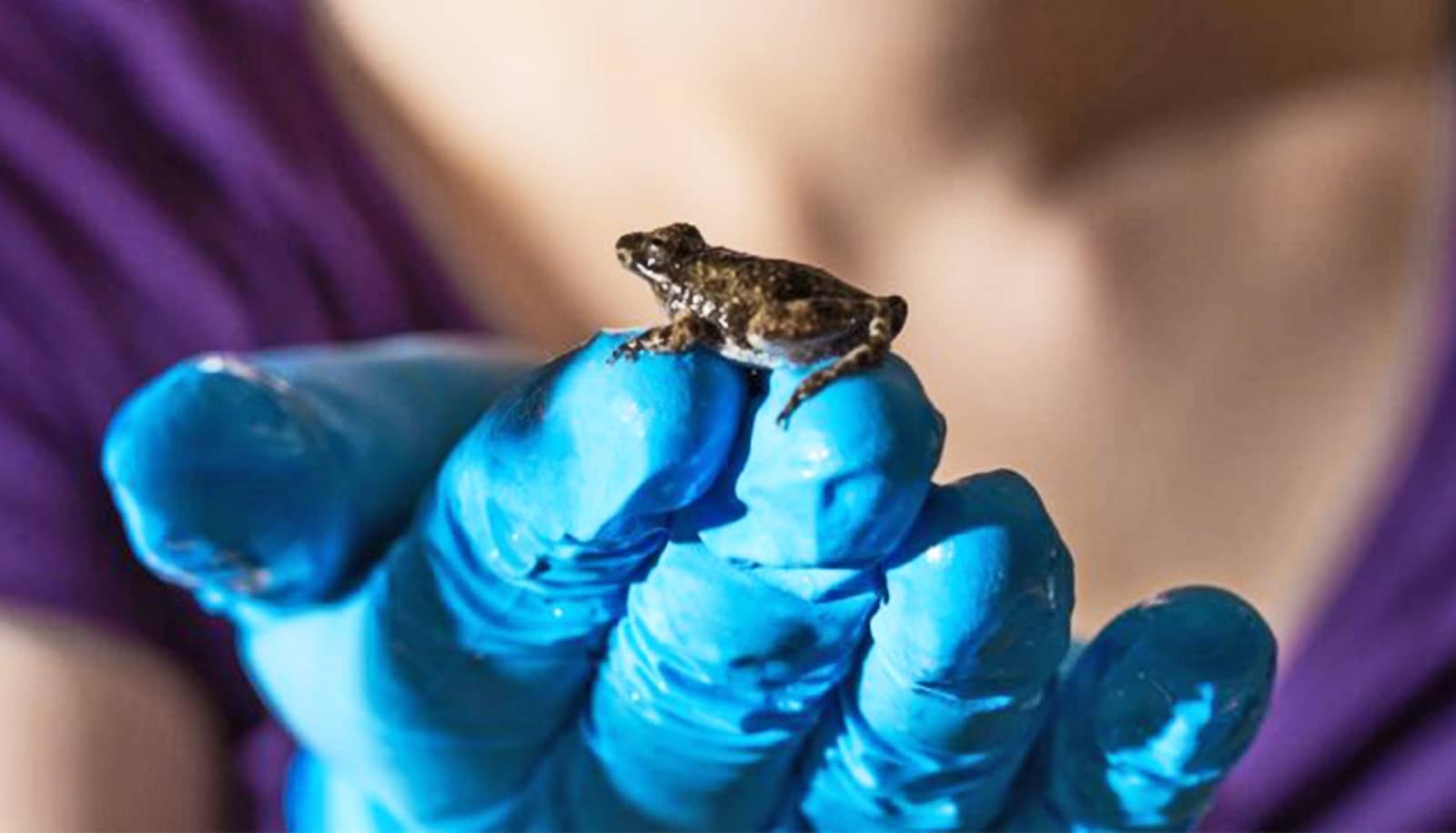Adult male white-spotted bush frogs are the sole caregivers of their offspring, devotedly guarding their fertilized eggs from cannibalistic male frogs and other predators, a new study shows.
The frog, Raochestes chalazodes, was presumed extinct until its rediscovery in 2011 in the Western Ghats of India, and is currently listed as critically endangered.
Frogs typically lay their eggs in or above standing water, but white-spotted bush frogs lay their eggs inside the hollow internodes of reed bamboo that grow along streambanks and their offspring emerge from the eggs as fully-formed froglets.
While an adult Raochestes chalazodes is typically only about two centimeters long, getting inside the bamboo isn’t easy—since those openings are even smaller—often less than 5 to 10 millimeters long and 3 to 4 millimeters wide.
For the study, researchers used pipe inspection cameras or endoscopes to observe frog egg clutches daily until all froglets and the attending father frogs left the spawning site. They studied a total of over 40 egg clutches across two breeding seasons in 2015 and 2016.
Male frogs that have found suitable spots for spawning in sections of the reed bamboo will call out for female mates using the vocal sacs in their throats. An ideal spawning site will have holes at the base of the bamboo section so that rainwater doesn’t collect and drown the eggs.
A female white-spotted frog responds to the mating call by entering the bamboo section to lay her eggs on the inner walls of the section, leaving after the male frog has fertilized them.
“Father frogs will then attend to the eggs by sitting on them, possibly to keep the eggs hydrated, and they guard the eggs by standing between them and the entry hole where they will lunge at intruders and make loud alarm calls to keep them away,” says K.S. Seshadri, of the biological sciences department at the National University of Singapore.
Every evening, the father frogs hunt for prey close by their spawning sites before returning to their egg-sitting duties. They will call out incessantly through the night to ward off other males with cannibalistic tendencies and other predators from consuming the eggs. This continues for about 37 to 47 days when all of the eggs have either hatched or perished, typically due to predation or parasites.
How ‘true frogs’ buck assumptions about evolution
“Predation by other male frogs is the main cause of egg mortality of white-spotted bush frogs. When there were no father frogs guarding the eggs, less than 30 percent of the eggs in a clutch survived,” Seshadri says.
Cannibalism among frogs is not unusual. Adult male white-spotted bush frogs feed on unattended eggs of another male for the nutritional benefit or to take over a new territory and reduce competition.
David Bickford, associate professor at the University of La Verne is a coauthor of the work in Behavioral Ecology and Sociobiology.
Source: National University of Singapore



